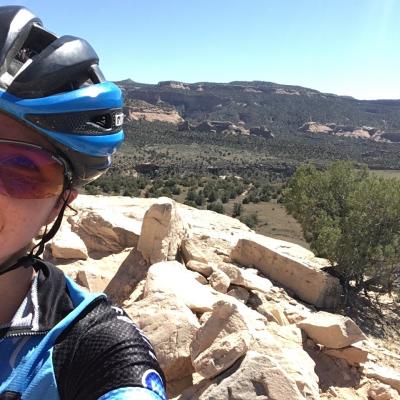How to Write a Good Cover Letter for a Research Position
Writing a cover letter can be intimidating, but it doesn’t have to be!
Some people believe cover letters are a science. Others seem to think they are more akin to black magic. Regardless of how you feel about cover letters, they are one of the most important parts of the job application process. Your resume or CV may get you an interview, but a good cover letter is what ensures that the hiring manager reads your resume in the first place.
Writing a cover letter for any job is important, but the art of writing a good cover letter for a research position can make or break your application. While writing a cover letter for a research position, you have to walk a fine line of proving your expertise and passion while limiting jargon and dense language.
In this post, we will explain cover letter writing basics, and then dive into how to write a research specific cover letter with examples of both good and bad practices.

Writing a cover letter can be intimidating, but it doesn’t have to be!
What Is A Cover Letter and Why Do Cover Letters Matter?
A cover letter is your opportunity to tell a story and connect the dots of your resume. Resumes and curriculum vitae (CVs) are often cold and static—they don’t show any sort of character that will give companies a hint about if you will fit in with their culture.
Your cover letter gives you the chance to demonstrate that you are an interesting, qualified, and intelligent person. Without proving that you are worth the time to interview, a company or research organization will set your application in the rejection pile without giving it a second look.
So, what is a cover letter, exactly? It is an explanation (written out in paragraph form) of what you can bring to the company that goes beyond the information in your resume. Cover letters give a company a glimpse into the qualities that will make you the ideal candidate for their opening.
Note that a cover letter is not the same as a letter of intent. A cover letter is written for a specific job opening. For example, if I got an email saying that the University of Colorado was looking for a tenure track faculty member to teach GEO 1001, and I chose to apply, I would write a cover letter.
A letter of intent, however, is written regardless of the job opening. It is intended to express an interest in working at a particular company or with a particular group. The goal of a letter of intent is to demonstrate your interest in the company (or whatever type of group you are appealing to) and illustrate that you are willing to work with them in whatever capacity they feel is best.
For example, if I loved the clothing company, Patagonia and wanted to work there, I could write a letter of intent. They may have an opening for a sales floor associate, but after reading my application and letter of intent, decide I would be better suited to a design position. Or, they may not have any positions open at all, but choose to keep my resume on hand for the next time they do.
Most organizations want a cover letter, not a letter of intent, so it is important to make sure your cover letter caters to the specifics of the job posting. A cover letter should also demonstrate why you want to work at the company, but it should be primarily focused on why you can do the job better than any of the other applicants.
How to Write a Good Cover Letter: The Basics
Writing a cover letter isn’t hard. Writing a good cover letter, a cover letter that will encourage a hiring manager to look at your application and schedule an interview, is more difficult (but certainly not impossible). Below, we will go over each of the important parts of a cover letter: the salutation, introduction, body, and conclusion, as well as some other best practices.
How to Write a Good Cover Letter Salutation
Don’t start with “Dear Sir/Ma’am” (or any iteration of a vague greeting, including “to whom it may concern”). Avoiding vague greetings is the oldest trick in the book, but it still holds a lot of weight. Starting a cover letter with the above phrase is pretty much stamping “I didn’t bother to research this company at all because I am sending out a million generic cover letters” across your application. It doesn’t look good.
The best practice is to do your research and use your connections to find a name. “Dear Joe McGlinchy” means a lot more than “Dear Hiring Manager.” LinkedIn is a great tool for this—you can look up the company, then look through the employees until you find someone that seems like they hire for the relevant department.
The most important thing about the salutation is to address a real human. By selecting someone in the company, you’ve demonstrated that you’ve done some research and are actually interested in this company specifically. Generic greetings aren’t eye-catching and don’t do well.
How to Write a Good Cover Letter Introduction
Once you’ve addressed your cover letter to a real human being, you need a powerful introduction to prove that this cover letter is worth the time it will take to read. This means that you need a hook.
Your first sentence needs to be a strong starter, something to encourage the hiring manager not only to continue reading the cover letter, but to look at your application as well. If you have a contact in the company, you should mention them in the first sentence. Something along the lines of “my friend, Amanda Rice (UX/UI manager), suggested I apply for the natural language processing expert position after we worked together on a highly successful independent project.”
The example above uses a few techniques. The name drop is good, but that only works if you actually have a connection in the company. Beyond that, this example has two strengths. First, it states the name of the position. This is important because hiring managers can be hiring for several different positions at a time, and by immediately clarifying which position you are applying for, you make their job a little bit easier. Next, this sentence introduces concrete skills that apply to the job. That is a good way to start because it begins leading into the body, where you will go into depth about how exactly your experience and skills make you perfect for the job.
Another technique for a strong lead-in to a cover letter is to begin with an applicable personal experience or anecdote. This attracts more attention than stereotypical intros (like the example above), but you have to be careful to get to the point quickly. Give yourself one or two sentences to tell the story and prove your point before you dive into your skills and the main body of the cover letter.
A more standard technique for introductions is simply expressing excitement. No matter how you choose to start, you want to demonstrate that you are eager about the position, and there is no easier way to do that than just saying it. This could take the form of “When I saw the description for X job on LinkedIn, I was thrilled: it is the perfect job for my Y skills and Z experience.” This option is simple and to-the-point, which can be refreshing for time-crunched hiring managers.
Since we’ve provided a few good examples, we will offer a bad example, so you can compare and contrast. Don’t write anything along the line of: “My name is John Doe, and I am writing to express my interest in the open position at your company.”
There are a few issues here. First, they can probably figure out your name. You don’t need that to be in the first sentence (or any of the sentences—the closing is an obvious enough spot). Next, “the open position” and “your company” are too generic. That sounds like the same cover letter you sent to every single employer in a hundred mile radius. Give the specifics! Finally, try to start with a little more spice. Add in some personality, something to keep the hiring manager reading. If you bore them to death in the first line, they aren’t going to look over your resume and application with the attention they deserve.
How to Write a Good Cover Letter Body
So, you’ve addressed a real human being, and you’ve snagged their attention with a killer opening line. What next? Well, you have to hold on to that attention by writing an engaging and informative cover letter body.
The body of a cover letter is the core of the important information you want to transmit. The introduction’s job was to snag the attention of the hiring manager. The body’s job is to sell them on your skills. There are a few formatting things to be aware of before we start talking about what content belongs in the body of the cover letter. First, keep the company culture and standards in mind when picking a format. For example, if I want to work for a tech startup that is known for its wit and company culture, I can probably get away with using a bulleted list or another informal format. However, if I am applying to a respected research institution, using a standard five paragraph format is best.
In addition, the cover letter should not be longer than a page. Hiring managers are busy people. They may have hundreds of resumes to read, so they don’t need a three page essay per person. A full page is plenty, and many hiring managers report finding three hundred words or less to be the idea length. Just to put that into context, the text from here to the “How to Write a Good Cover Letter Body” header below is about perfect, length-wise.
Now, on to the more important part: the content. A cover letter should work in tandem with a resume. If you have a list of job experiences on your resume, don’t list them again in the cover letter. Use the valuable space in the cover letter to give examples about how you have applied your skills and experience.
For example, if I have worked as a barista, I wouldn’t just say “I have worked as a barista at Generic Cafe.” The hiring manager could learn that from my resume. Instead, I could say “Working as a barista at Generic Cafe taught me to operate under pressure without feeling flustered. Once…” I would go on to recount a short story that illustrated my ability to work well under pressure. It is important that the stories and details you choose to include are directly related to the specific job. Don’t ramble or add anything that isn’t obviously connected. Use the job description as a tool—if it mentions a certain skill a few times, make sure to include it!
If you can match the voice and tone of your cover letter to the voice of the company, that usually earns you extra points. If, in their communications, they use wit, feel free to include it in your letter as well. If they are dry, to the point, and serious, cracking jokes is not the best technique.
A Few Don’ts of Writing a Cover Letter Body
There are a few simple “don’ts” in cover letter writing. Do not:
- List skills without explaining them.
- Bad: I am smart, dedicated, determined, and funny.
- Better: When I was working at Tech Company, I designed and created an entirely new workflow that cut the product delivery time in half.
- Tell rambling, unrelated stories.
- Bad: When I was seven, I really loved the monkeys at the zoo. This demonstrates my fun-loving nature.
- Better: While working for This Company, I realized I was far more productive if I was light-hearted. I became known as the person to turn to in my unit when my coworkers needed a boost, and as my team adopted my ideology, we exceeded our sales goals by 200%.
- Talk about what the job can do for you—focus on what you can do for them.
- Bad: I would love this job because it would propel me to the next stage of my career.
- Better: With my decade of industry experience communicating with engineers and clients, I am the right person to manage X team.
- Highlight your weaknesses or lack of experience.
- Bad: I know I’m not the most qualified candidate for this job, but…
- Better: I can apply my years of experience as an X to this position, using my skills in Y and Z to…
- Add any details that should be irrelevant to your ability to do the job.
- Bad: I am a thirty year old white woman from Denver…
- Better: I have extensive experience managing diverse international teams, as illustrated by the time I…
The most important part of the cover letter is the body. Sell your skills by telling stories, but walk the razor’s edge between saying too much and not enough. When in doubt, lean towards not enough—it is better for the hiring manager to call you in for an interview to learn more than to bore them.
How to Write a Good Cover Letter Conclusion
The last lines of a cover letter are extremely important. Until you can meet in-person for an interview, the conclusion of your cover letter will greatly affect the impression the hiring manager has of you. A good technique for concluding your cover letter is to summarize, in a sentence, what value you can bring to the company and why you are perfect for the position. Sum up the most important points from your cover letter in a short, concise manner.
Write with confidence, but not arrogance. This can be a delicate balance. While some people have gotten away (and sometimes gotten a job) with remarks like, “I’ll be expecting the job offer soon,” most do not. Closing with a courteous statement that showcases your capability and skills is far more effective than arrogance. Try to avoid trite or generic statements in the closing sentence as well. This includes the template, “I am very excited to work for XYZ Company.” Give the hiring manager something to remember and close with what you can offer the company.
The final step in any cover letter is to edit. Re-read your cover letter. Then, set it aside for a few hours (or days, time permitting) and read it again. Give it to a friend to read. Read it aloud. This may seem excessive, but there is nothing more off-putting than a spelling or grammar error in the first few lines of a cover letter. The hiring manager may power through and ignore it, but it will certainly taint their impression.
Once the cover letter is as flawless and compelling as it can be, send it out! If you are super stuck on how to get started, working within a template may help. Microsoft Word has many free templates that are aesthetically appealing and can give you a hint to the length and content. A few good online options live here (free options are at the bottom—there is no reason to pay for a resume template).
How to Write a Cover Letter for a Research Position
Writing a cover letter for a research position is the same as writing any other cover letter. There are, however, a few considerations and additions that are worth pointing out. A job description may not directly ask for a cover letter, but it is good practice to send one unless they specifically say not to. This means that even if a cover letter isn’t mentioned, you should send one—it is best practice and gives you an opportunity to expand on your skills and research in a valuable way.
Format and Writing Style for a Research Position Cover Letter
Research and academics tend to appreciate formality more than start-ups or tech companies, so using the traditional five paragraph format is typically a good idea. The five paragraph format usually includes an introduction, three short examples of skills, and a concluding paragraph. This isn’t set in stone—if you’d rather write two paragraphs about the skills and experience you bring to the company, that is fine.
Keep in mind that concise and to-the-point writing is extremely valuable in research. Anyone who has ever written a project proposal under 300 words knows that every term needs to add value. Proving that you are a skilled writer, starting in your cover letter, will earn you a lot of points. This means that cover letters in research and academia, though you may have more to say, should actually be shorter than others. Think of the hiring manager—they are plowing through a massive stack of verbose, technical, and complex cover letters and CVs. It is refreshing to find an easy to read, short cover letter.
On the “easy to read” point, remember that the hiring manager may not be an expert in your field. Even if they are, you cannot assume that they have the exact same linguistic and educational background as you. For example, if you have dedicated the last five years of your life to studying a certain species of bacteria that lives on Red-Eyed Tree Frogs, all of those technical terms you have learned (and maybe even coined) have no place in your cover letter. Keep jargon to an absolute minimum. Consider using a tool like the Hemingway Editor to identify and eliminate jargon. While you want to reduce jargon, it is still important to prove that you’ve researched their research. Passion about the research topic is one of the most valuable attributes that a new hire can offer.
Use your cover letter to prove that you have done your homework, know exactly what the institution or group is doing, and want to join them. If you have questions about the research or want to learn more, it isn’t a bad idea to get in touch with one of the researchers. You can often use LinkedIn or the group’s staff site to learn who is working on the project and reach out.
What Research Information Should be Included in a Cover Letter
A research position cover letter is not the place for your academic history, dissertation, or publications. While it may be tempting to go into detail about the amazing research you did for your thesis, that belongs in your CV. Details like this will make your cover letter too long. While these are valuable accomplishments, don’t include them unless there is something that pertains to the group’s research, and your CV doesn’t cover it in depth.
If you do choose to write about your research, write about concrete details and skills that aren’t in your CV. For example, if you have spent the last few years working on identifying the effects of a certain gene sequence in bird migration, include information about the lab techniques you used. Also, try to put emphasis on the aspects of your resume and CV that make you stand out from other candidates. It is likely that you will be competing with many similarly qualified candidates, so if you have a unique skill or experience, make sure it doesn’t get lost in the chaos—a cover letter is the perfect place to highlight these sorts of skills.
Industry experience is a great differentiator. If you have relevant industry experience, make sure to include it in your cover letter because it will almost certainly set you apart. Another valuable differentiator is a deep and established research network. If you have been working on research teams for years and have deep connections with other scientists, don’t be afraid to include this information. This makes you a very valuable acquisition for the company because you come with an extensive network
Include Soft Skills in Your Cover Letter
Scientific skills aren’t the only consideration for hiring managers. Experience working with and leading teams is incredibly valuable in the research industry. Even if the job description doesn’t mention teamwork, add a story or description of a time you worked with (or, even better, lead) a successful team. Soft skills like management, customer service, writing, and clear communication are important in research positions. Highlight these abilities and experiences in your cover letter in addition to the hard skills and research-based information.
If you are struggling to edit and polish your letter, give it to both someone within your field and someone who is completely unfamiliar with your research (or, at least, the technical side of it). Once both of those people say that the letter makes sense and is compelling, you should feel confident submitting it.
Cover letters are intended to give hiring managers information beyond what your resume and CV are able to display. Write with a natural but appropriately formal voice, do your research on the position, and cater to the job description. A good cover letter can go a long way to getting you an interview, and with these tips, your cover letters will certainly stand out of the pile.




